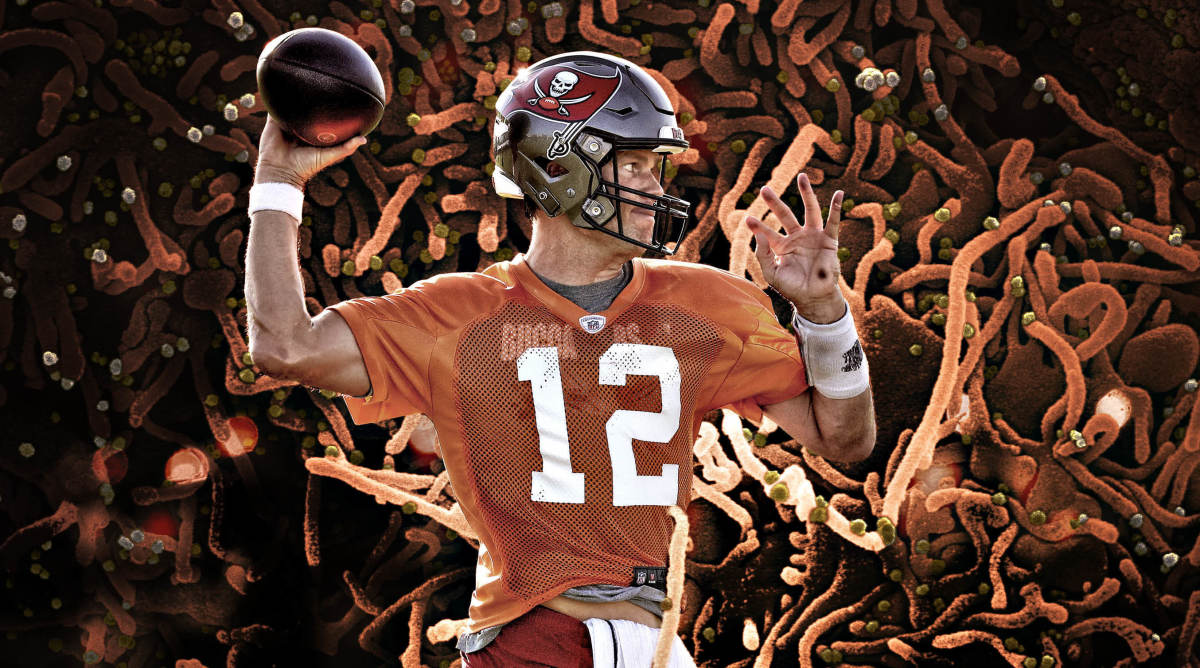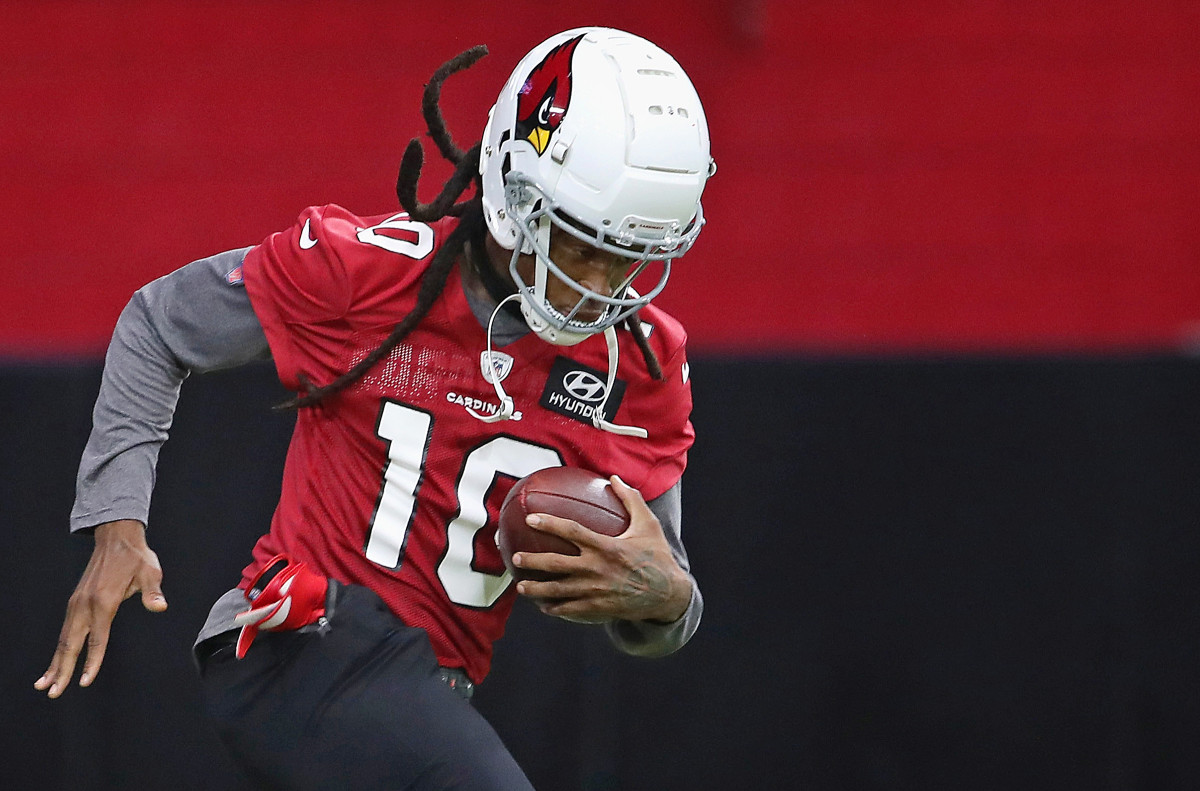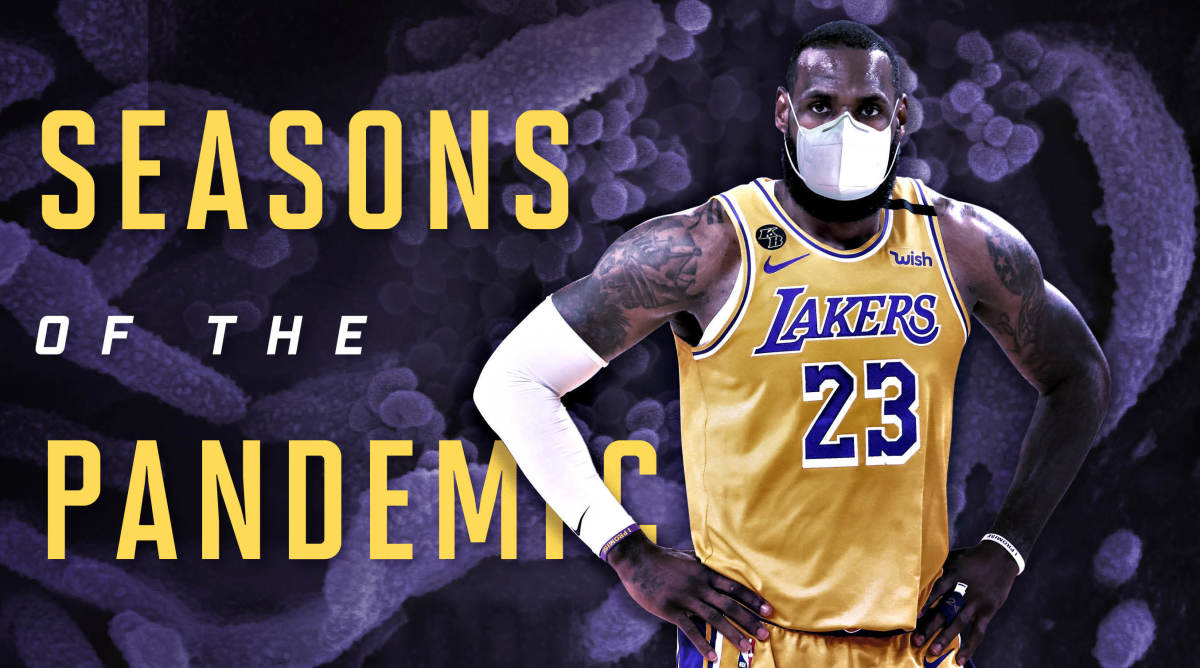When the World Stopped, the NFL Didn’t
While it once seemed unfathomable that Tom Brady would leave the Patriots, the circumstances under which his departure took place will always be the more difficult part to believe. On the afternoon of March 18, 2020, when Jason Licht phoned the QB who would later win him a Super Bowl, from Bruce Arians’s home, the world was just beginning to transform into something we’d never experienced.
One week earlier when Rudy Gobert tested positive for COVID-19, the suspension of the NBA season was the first domino to fall in the sports calendar that plays a part in setting the rhythm of American life. March Madness. Baseball’s Opening Day. Hockey’s Stanley Cup playoffs. The NFL, though, was not in season, and given that most of us had no idea what the next day—let alone six months in the future—would look like, the league carried on with its biggest offseason business.
So the Bucs GM and head coach closed the deal with Brady over a 90-minute phone call. After they hung up, Licht, Arians and Arians’s wife, Christine, were unsure of how to celebrate. They ended up sitting outside an Italian restaurant in South Tampa, toasting one another, thinking how in a normal year they would have rented out the whole place and celebrated with the entire organization. But this was about to be the most abnormal year of our collective lives. Christine wouldn’t even meet Brady until the night he and her husband won the Lombardi Trophy together, almost 11 months later.
“It’s one of the most exciting moments in my tenure as the general manager, and with Bruce as the head coach here, and we go to dinner with the three of us,” Licht said in February. “It was eerie.”

Eeriness would become the theme of the NFL’s COVID-19 season. Many games were played in entirely empty stadiums, the environment feeling more like an intrasquad scrimmage. A nasopharyngeal swab became as much a part of team employees’ daily routine as morning coffee. When Chiefs GM Brett Veach went over to Patrick Mahomes during practice before Super Bowl LV to ask how his toe was feeling, Veach instinctively began backing up after a couple of minutes, not wanting the Kinexon tracking tags they were wearing to register him as a close contact, just in case. Around that same time, Arians and his two oldest assistants, 68-year-old Rick Christophel and 82-year-old Tom Moore, went to Tampa General for their second dose of the COVID-19 vaccine. (QBs coach Clyde Christensen turned 65 on Jan. 28, but Arians said the hospital didn’t have enough supply at the time for him to receive his first shot before the Super Bowl.)
Rewinding now to March 2020, when we first became acquainted with any of this new world, is something of an unpleasant exercise. There was a naiveté to the decisions we were all making then—even the scientific and medical communities were still seeking information on how this novel virus behaves. The NFL’s early decisions to postpone offseason training programs indefinitely and cancel visits with draft prospects were intermingled with the news of a new 10-year collective bargaining agreement between the players and the league’s owners, and the blockbuster trades of Stefon Diggs to Buffalo and DeAndre Hopkins to Arizona. While we all sought to cling to anything that felt normal, normal sports transactions against the backdrop of this bizarro world we’d all been plunged into was also entirely disorienting.
Sports, specifically the NBA, were the bellwether for how our normal activities would grind to a halt as the virus spread within our country’s borders. And the juxtaposition of the NFL’s big-money free-agent contracts with the onset of a pandemic that would kill half a million Americans was the beginning of a complicated dialogue about what role sports could or should play during a worldwide health crisis. Sixty-six NFL players exercised their right to opt out of the 2020 season, prioritizing the roles that mean more than the sport they play: as cancer survivors, parents of infants or, in the case of Super Bowl champion right guard Laurent Duvernay-Tardif, a doctor working on the front lines in a Canadian long-term care facility.

All along the NFL insisted it would play a complete 2020 season—and it did. There were 256 regular-season games, only five of which had to be postponed because of outbreaks, and a complete—expanded, even—playoff slate. “We were able to show that you can move forward with some of the activities that we all enjoy, and that form so much depth in our lives and stay safe at the same time,” Allen Sills, the NFL’s chief medical officer, said before the Super Bowl, “It doesn’t have to be an either/or choice.”
But doing so came with a hefty price tag: The NFL is believed to have spent more than $100 million to implement infectious disease protocols, including administering nearly 1 million tests throughout the season. They had the resources to do what, for instance, public schools could not. Every day from Aug. 1 through Super Bowl Sunday, Sills and those running the league’s testing program gathered for a Zoom call—8:30 a.m. Monday through Friday, 7:30 a.m. on game-day Sundays—to discuss the previous day’s testing results and assign a contact tracer to any new cases. In November the league introduced a rapid PCR test to its program, which was used to diagnose the barber who tested positive for COVID-19 and came to the Chiefs facility one week before the Super Bowl (the line of players waiting for a haircut included Mahomes). The league’s contact tracing team jumped into action, identifying as close contacts the two players who had received haircuts before the barber’s test results came in; Daniel Kilgore and DeMarcus Robinson isolated until they had five straight days of negative tests.
“It is very hard to panic these people at this point,” league executive Jeff Miller said of that close call on the eve of the Super Bowl. “The moments that led to anxiety earlier in the year have been socialized a bit.”

Read More Stories On the Year of the Shutdown
Of course, the socialization of things that cause stress speaks to the cost of this past year that can’t be measured in dollars, with which all of us are grappling in different ways. The strain on our mental health. The scramble to make our daily lives work without the same routines and support systems that normally held them up. The highly regulated environments at the team facilities, and the required rigors of the NFL schedule, didn’t exempt players and coaches from sharing in these stressors.
Brady confronted the same fears as millions of Americans in September, when his father required a lengthy hospital stay for a severe case of COVID-19 that Tom Brady Sr. later told SI’s Greg Bishop was “life or death.” Brady Sr. missed his son’s first two games with his new team because he was lying prone on his hospital bed while being pumped with 100% oxygen, before he was able to return home in better health.
Chiefs offensive coordinator Eric Bieniemy lived in a hotel from July 23 through the Super Bowl to isolate from his wife, Mia, and their two sons. Bieniemy’s older son, Eric III, has cerebral palsy and respiratory issues, making the 26-year-old high risk for contracting COVID-19. To keep him safe, Bieniemy made this private sacrifice for the entirety of the 2020 season: He would stay in a hotel six nights out of the week and only return home on Fridays—but wearing double masks, keeping a distance and sleeping in the basement. “It’s been this way for the past six months,” Bieniemy said before Super Bowl LV. “It’s been a challenge.” The lonely nights were a stark contrast from how 2020 began, with Eric III’s wheelchair parked on a platform inside Hard Rock Stadium in Miami, Mia whispering play-by-play in his ear as the Chiefs fought their way to a Super Bowl championship.
A few short weeks later, the world shut down. The NFL hopes it will never have to do anything like the 2020 season again, and there are reasons for optimism, namely the ever-increasing vaccine rollout. But if we use the sports calendar as a marker for the passage of time, and think back to the last time the NFL did free agency, it’s remarkable that we still are grasping for the same things as we were a year ago and hoping things get better, for reasons that go well beyond the world of football.
